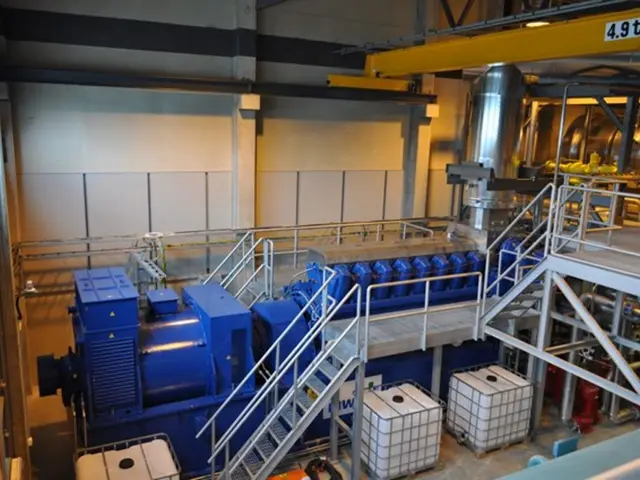Guidelines for Crafting Synthesizer Sound: An Instructive Guide on Sound Design
In the realm of music production, synthesizers have become an essential tool, serving as the primary sound generators. These electronic instruments produce periodic waveforms that form the basis of sound synthesis, offering a vast array of sonic possibilities.
One of the key features of a synthesizer is its oscillators, which come in several types, each providing distinct sound qualities. By altering pitch and frequency, oscillators can significantly affect the tone and feel of the sound. Incorporating white noise, pink noise, or brown noise can add crispness or different tonal characteristics to sounds.
The mono or polyphonic capabilities of a synthesizer determine how many notes can be played simultaneously. For those seeking to create complex and layered sounds, polyphonic synthesizers are the way to go. Layering is a powerful technique that adds complexity and richness to your sound by combining different sound samples.
Filters play a crucial role in shaping the sound. Low-pass filters allow frequencies below a certain point to pass through, creating a warm and smooth tone, while high-pass filters remove low frequencies and keep the higher, sharper tones. Band-pass filters allow a specific range of frequencies to come through, focusing on a particular sound spectrum.
Envelopes are used to shape the sound's dynamics over time and control various parameters. The ADSR envelope, in particular, controls the sound's attack, decay, sustain, and release.
Arpeggiators, textural elements, and automation are other essential elements in synthesizer sound design. Arpeggiators take a chord input and translate it into a sequence of notes played in a specific order, breathing life into simple chords. Textural elements can be introduced through sampling natural sounds and layering them over synth tracks. Automation in software synthesizers usually ties to a DAW, recording changes made during a performance.
Compression, reverb, and delay are essential tools for adding space and dimension to your sound. Compression helps control the amplitude by reducing the difference between the loudest and softest parts of a sound, while reverb and delay mimic the acoustics of larger environments and create echoes.
FM synthesis, a unique method of sound generation, involves using one waveform to modulate the frequency of another, creating complex harmonic and inharmonic spectra. This technique can greatly benefit from automation, as slight variations in modulation index or operator levels can lead to dynamic and textured sounds.
For those looking to learn synthesizer sound design techniques for music production, there are numerous resources available. YouTube tutorials, such as the detailed Sonicware Liven Evoke tutorial, offer in-depth explanations of real-time recording, sound design parameters, patch examples, grain FX, parameter automation, and MIDI settings. Educational programs like Syntorial provide interactive lessons for learning the basics of subtractive synthesis.
Music production blogs, such as LANDR's blog on creating synth pads, offer practical articles explaining how to craft atmospheric pad sounds step-by-step. Websites like MusicRadar provide comprehensive guides on mastering any software synthesizer, encouraging deep exploration of synth parameters.
Collaboration is key in sound design, working alongside artists and music producers can lead to innovative projects that challenge and expand creative limits. Developing a diverse and compelling portfolio is essential for building a career in sound design, including a mix of projects that demonstrate a range of sound design skills.
In conclusion, the world of synthesizer sound design offers a wealth of possibilities for musicians and producers. By understanding the basics of oscillators, filters, envelopes, arpeggiators, and automation, and by exploring resources like tutorials, educational programs, and blogs, one can embark on a journey of creative exploration and sound design mastery.
- Synthesizers, with their oscillators and vast sonic possibilities, have emerged as crucial tools in music production, shaping the world of audio in lifestyle, education-and-self-development, entertainment, and technology.
- Filters in synthesizers play an essential role in sound shaping, enabling producers to create warm tones using low-pass filters or sharper tones with high-pass filters, enhancing the overall music production.
- Compression, reverb, and delay are vital tools during sound design, adding dimension to your sound by controlling amplitude, mimicking larger environments, and creating echoes, respectively.
- Learning synthesizer sound design techniques is accessible through numerous resources, from YouTube tutorials like Sonicware Liven Evoke to educational programs like Syntorial, providing practical guidance for musicians and producers seeking to expand their sound design skills and build diverse portfolios.




